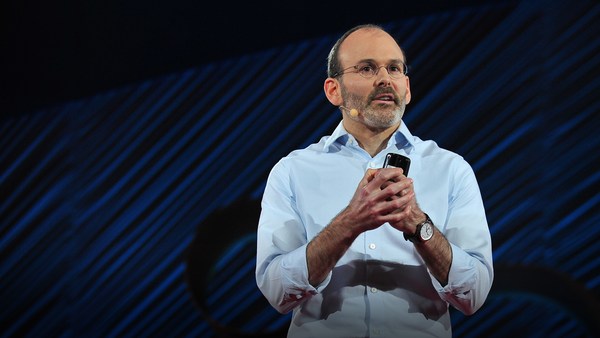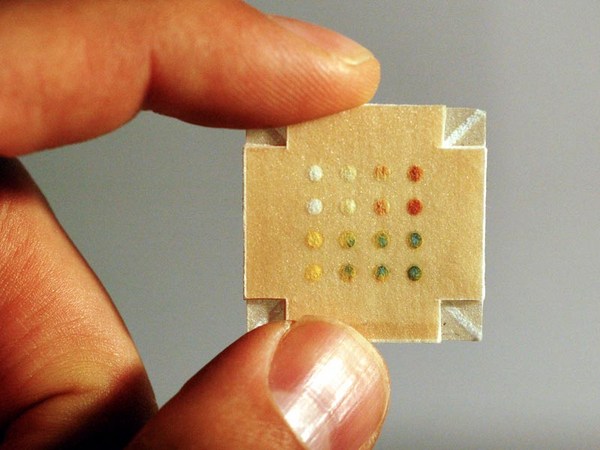"It gets easier, right?" These are the words I often hear from young parents who are new to the game of worrying about their children. I tell them that it doesn't. It gets different, but there's always something to worry about as parents. I remember how I would lie half-awake at night listening to my son breathe when he was young and had asthma, and then, when he was a teen, until I heard the front door chime open, and I knew that he was home safe. Worrying about our kids comes with the territory.
Now, many of these worries are about basic issues, like what they eat, where they are, who they're with. But we also need to keep an eye on new behaviors and fads. The latest craze is something that may not yet be on everyone's radar as a serious health concern, and that is the newfound popularity of vaping, or inhaling sweet aerosols produced by vaporizing e-liquids in e-cigarettes.
E-cigarettes, or "vapes," as they are commonly called, are flying off the shelves like candy. This year, the e-cigarette market is expected to drive 26 billion dollars in sales worldwide. Over the next six years, that volume is expected to double. We have a lot of serious concerns about the health impact of vaping, and unfortunately, not nearly enough answers. This becomes even more concerning when you think of who uses e-cigarettes. E-cigarette use, at least in the US, has grown rapidly among youth and young adults -- our kids, our most vulnerable population. There was a 900 percent growth in the use of e-cigarettes by youth between 2012 and 2015. The most recent estimates suggest that approximately 3.6 million high school and middle school students have used e-cigarettes in the US.
Now, e-cigarettes were originally created to offer smokers a cleaner form of nicotine to help with their cigarette addiction. In the US, these devices come under the FDA's jurisdiction as a tobacco product. But the science on these devices has not been able to keep up with the rapid market growth, so regulations on the components of these devices and e-liquids are lagging. Current regulations do restrict sales of these devices to anyone under the age of 18, but these do not seem to have had much of an impact on the explosion in the use of these devices by teens.
You know, the first time I heard of and saw an e-cigarette, I knew right away that teens would love it. These devices are technology on a stick, a perfect fit for the smartphone generation -- small, rechargeable, easy to use, easy to modify, nice smelling -- some even sync with your smartphone to let you know how much you have vaped. Even I was very drawn to these very clever devices. And since I had spent a long time researching teen and adult addictions, I immediately realized that these devices fit perfectly into the teen psyche.
Teens are impulsive, and they love to try new things. They're also craving independence, and they love to make things their own. E-cigarettes meet these needs perfectly by allowing them the chance to both innovate and personalize their vape experience. They can choose from over 15,000 different e-liquid flavors and multiple nicotine concentrations. They can even create their own nicotine flavor combination. They can change how much vapor is produced from these devices by modifying the puff volume and the constituents and the power and temperature of the devices.
They can even use these devices for "cloud chasing." Cloud chasing, also called vape tricks or smoke tricks, involves producing large vape clouds with quirky shapes and names, like rings, dragons, ghosts ... Cloud chasers can even participate in cloud competitions and win prizes for creating the most innovative shaped clouds.
Teens can also change the strength and throat hit from the vapor by either vaporizing the e-liquid at higher temperatures or dripping the e-liquid directly onto a heated coil. They can even use these devices for marijuana vaping. And since the devices use lower temperatures and do not combust or burn the marijuana, they can do this very discreetly, without the distinctive smell of burnt marijuana. So they can really make these vape experiences their own, which may explain the astounding rise in the use of these devices by youth.
E-cigarettes are technically a very simple device. There is a receptacle for the e-liquid which can be a tank, a pod or a plug. There is a battery that charges the coil, which then vaporizes the e-liquid. And then there is a mouthpiece, where the user can actually draw from the e-cigarette. In 2017, there were 466 e-cigarette devices in the marketplace. These range from cigarette-like devices which are also called "cigalikes" to tank systems, which are also called "pens." And then there are modified devices, which are also called "mods." Mods look nothing like a cigarette, and they come in various shapes and sizes, with different kinds of attachments and user adjustments. They're very popular for cloud chasing.
The most recent entrance into the marketplace are the pod devices, which contain the e-liquid in a pod. These are very popular, by the way, among teens. An example of this is the Juul, which not only looks like a USB device but can also be plugged into a USB outlet to charge. Many teens do not even think that these are e-cigarettes, which has led to the use of terms like "juuling" instead of "vaping." Many of these devices are so discreet and produce so little vapor that teens are using them in classrooms and hiding them in objects like Sharpie pens, their clothes, their books.
Now, many teens think that these devices produce water vapor, and therefore, they are safe to use. But this could not be further from the truth. What is produced is not even a vapor, it's an aerosol, and let me tell you, the difference is quite pronounced. Aerosols contain many finely suspended particles of liquids and gases that are created from whatever is in the e-liquid. So an aerosol could contain propylene glycol and glycerin, which are solvents in the e-liquid. Now, these solvents are known to be safe for edible use, so for use in products that you eat, but we know very little about their safety following long-term inhalational exposure. The e-liquids can also contain alcohol, sometimes in high levels, and inhaling alcohol is known to have toxic effects on the brain.
I told you earlier that the e-liquids contain over 15,000 different flavors. Here are some examples, some with very catchy but familiar names like "Skittles" and "Fruit Loops," and others with more exotic names like "Dragon's Milk" and "Tiger's Blood" and "Unicorn Puke." The e-liquid or the aerosol can also contain metallic particles like chromium, cadmium and lead. These are generated from the heating coil in the devices and are also known to have many toxic effects on vital organs. So no, let me make this very clear: what is produced is definitely not water vapor.
Exposure of the teen brain to nicotine through e-cigarettes is also very concerning. The teen brain is very sensitive to even low levels of nicotine and gets very easily addicted. In fact, we have known for a long time that 90 percent of smokers start smoking cigarettes prior to the age of 18. Those who start early are more addicted and have a harder time quitting smoking. In other words, and to quote a past FDA commissioner, "Nicotine addiction ... is a pediatric disease."
E-cigarettes can expose teens to a lot of nicotine. Many of these devices contain the amount of nicotine that is in a full pack of cigarettes. The more recent pod devices contain a nicotine salt, which has a smoother taste and is much easier to use and can produce rapid increases in brain nicotine levels. Teens who use e-cigarettes regularly report symptoms of craving -- feeling anxious when they don't have their e-cigarettes. All these are hallmarks of a behavioral addiction.
E-cigarettes are not only addictive but they also affect many other organs in the body. So nicotine, which is in e-cigarettes, for example, binds to a receptor called the nicotinic acetylcholine receptor, which plays a key role in the functioning of almost all organ systems in the human body. And chronic exposure to nicotine changes the functioning of these systems. So as an example, chronic exposure to nicotine decreases the flexibility of the blood vessels and changes how the heart responds to acute challenges like stress. The teen brain is not only sensitive to the addictive effects of nicotine but also to its toxic effects. In adolescent animals, nicotine is a very well-established neurotoxin, and it decreases learning, memory and attention processes and increases hyperactivity symptoms.
Teens who use tobacco products are more likely to use marijuana and alcohol and also develop depression and anxiety as a teen or as an adult. So nicotine addiction through e-cigarettes could be leading them down the path of other addictions and other mental health problems. Now, in adolescent animals, nicotine also produces epigenetic changes, or heritable changes in gene expression, for example, in the genes involved in asthma. So teens who use nicotine may not only be harming themselves but they could be harming their future generations.
You know, the very existence of e-cigarettes could have led to an entire generation of nicotine-addicted youth. Easy access to these devices could have led to more experimentation with marijuana and many other vaporizable substances by youth. While there is no doubt that providing smokers with a cleaner form of nicotine is and should continue to be a critical goal, we still do not know if these devices help smokers quit smoking, and we know very little about the long-term effects of these devices. What we do know is that youth -- lots of youth -- are using these devices. In fact, the FDA commissioner recently used the term "epidemic" to describe e-cigarette use in the US. While trying to solve one huge public health problem, cigarette smoking, we may have created another colossal one. Our lack of vigilance in the earlier years around cigarette smoking led to a cigarette epidemic and many, many cigarette-related diseases. We do not want to repeat the same mistakes with e-cigarettes. So now is the time for action, for regulations that address the appeal and access of these devices to youth. Do smokers really need 15,000 kid-friendly flavors to quit smoking? Do they need so many different kinds of devices? Is it a good idea to have devices which are so easy to hide and so easy to use?
We recently heard that the FDA plans to introduce stricter regulations on sales of these devices that contain e-liquid flavors in retail locations like convenience stores and gas stations, and also introduce stricter regulations on sales of devices to minors over the internet. Is this going to be sufficient to change this rapid increase in youth uptake? We need to ask and answer such critical questions.
Now is also the time for a serious public education campaign. Teens and their parents need to know that while e-cigarettes may contain less toxins than cigarettes, they're certainly not benign. Exposure of their bodies to the chemicals produced by these devices could be changing them in ways they may not like and setting them up for future unknown toxicities and health problems.
You know, when I said earlier that e-cigarettes were a perfect fit for the smartphone generation, I was not kidding. We live in a technology-crazed world, where the latest device and technology gets a lot of attention just because it is technology and because it is the latest thing. More and more over the next few years and for the rest of our lives, we are going to see technologies coming into the marketplace that may not raise any health flags at first, simply because they don't look unhealthy or they're not a medical device. For example, we could see devices that may make it easier to go longer without sleep or help us lose weight -- a personal goal of mine -- or achieve any number of other goals that we as consumers are very, very interested in. But many of these devices may come with unacceptable risks to our own health.
So if we want to protect our health and the health of our children, perhaps we should get out of the habit of automatically celebrating such new technology and get into the habit of looking at them with a critical eye, perhaps even through a medical lens. Because, you know something? Our health, the health of our children and our future generations is far too valuable to let it go up in smoke -- or even in aerosol.
Thank you.
(Applause)





